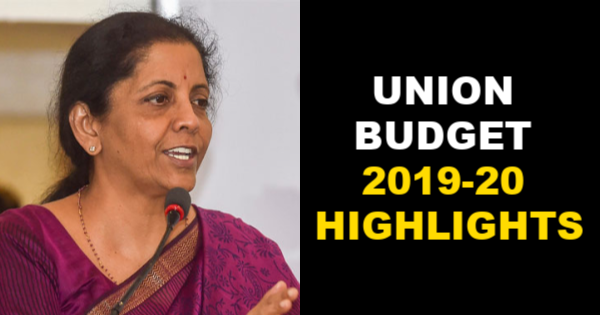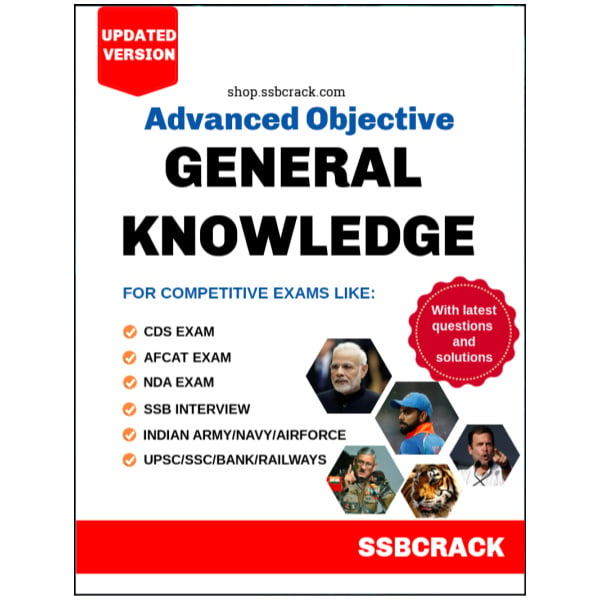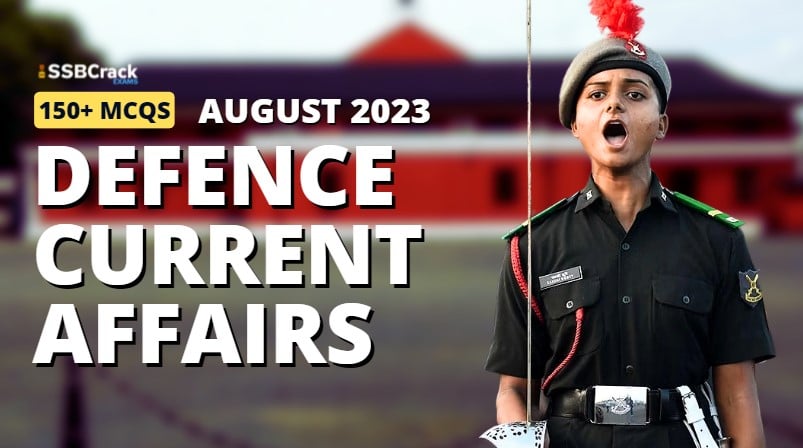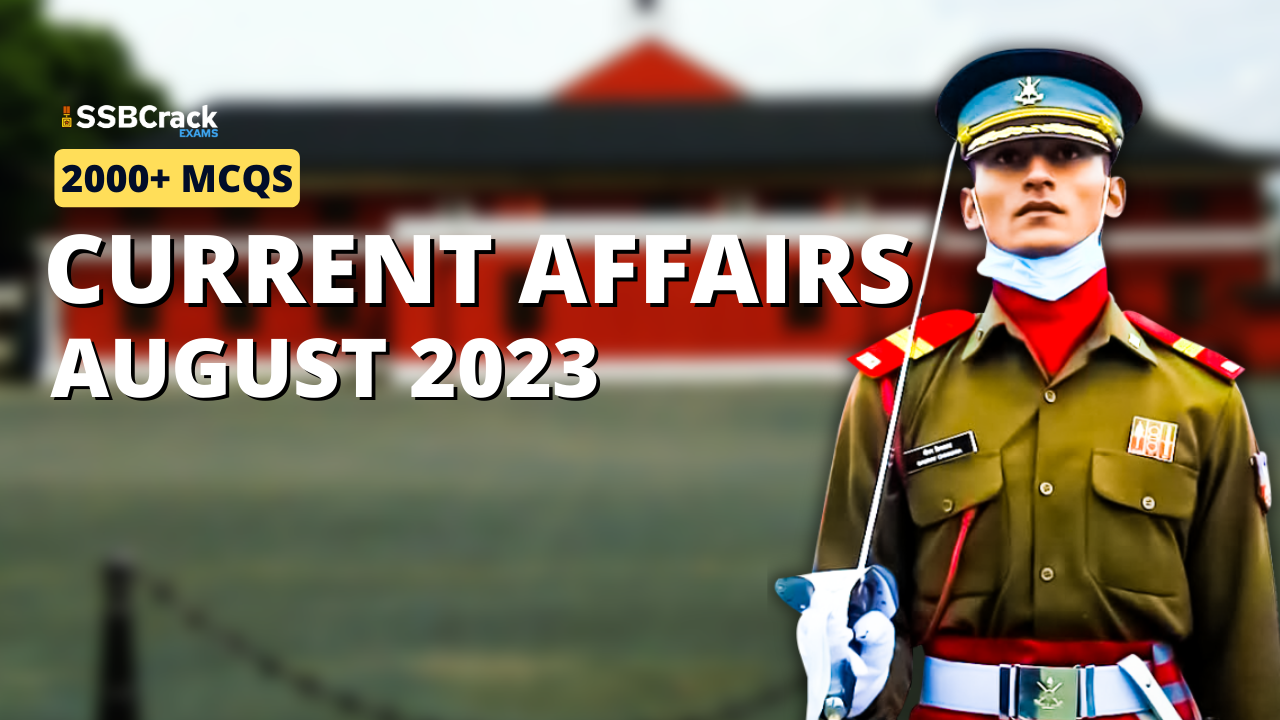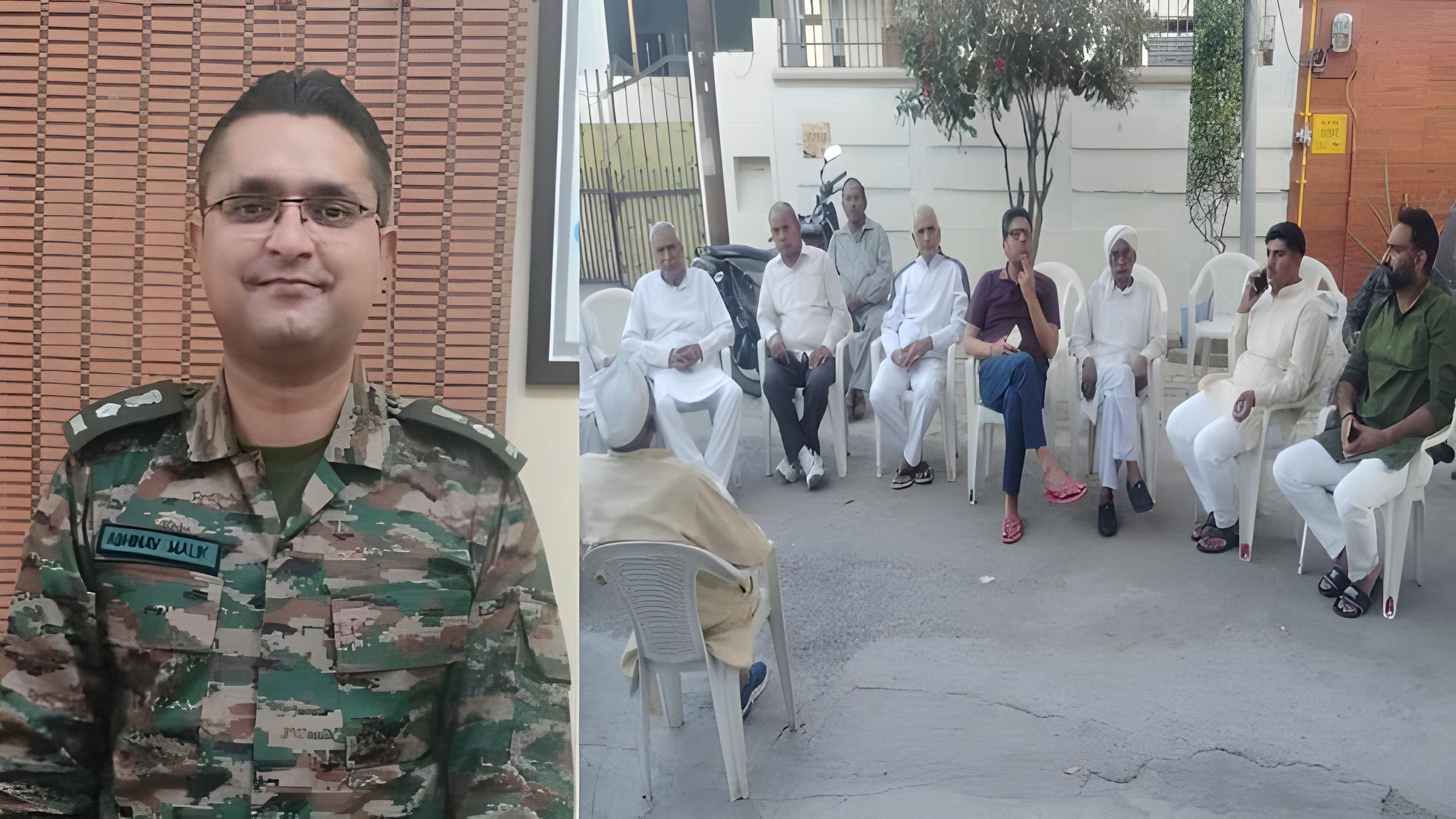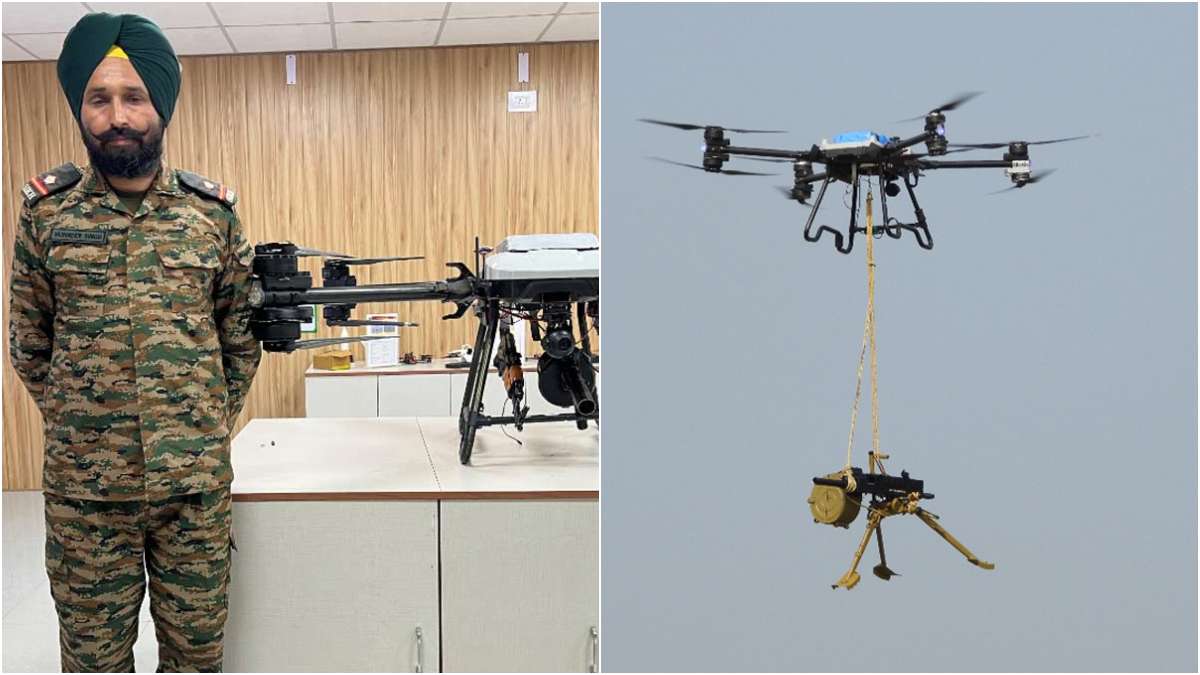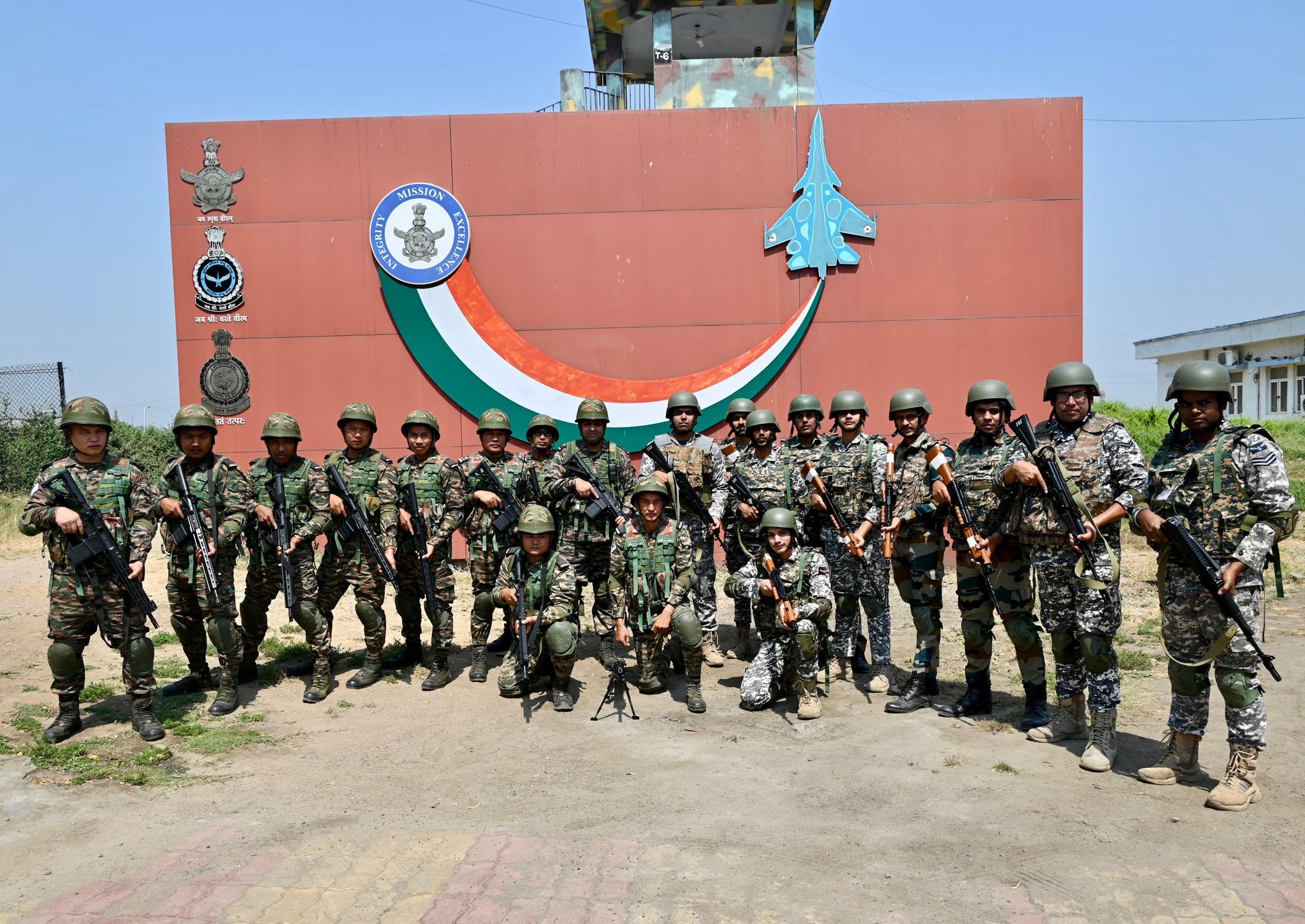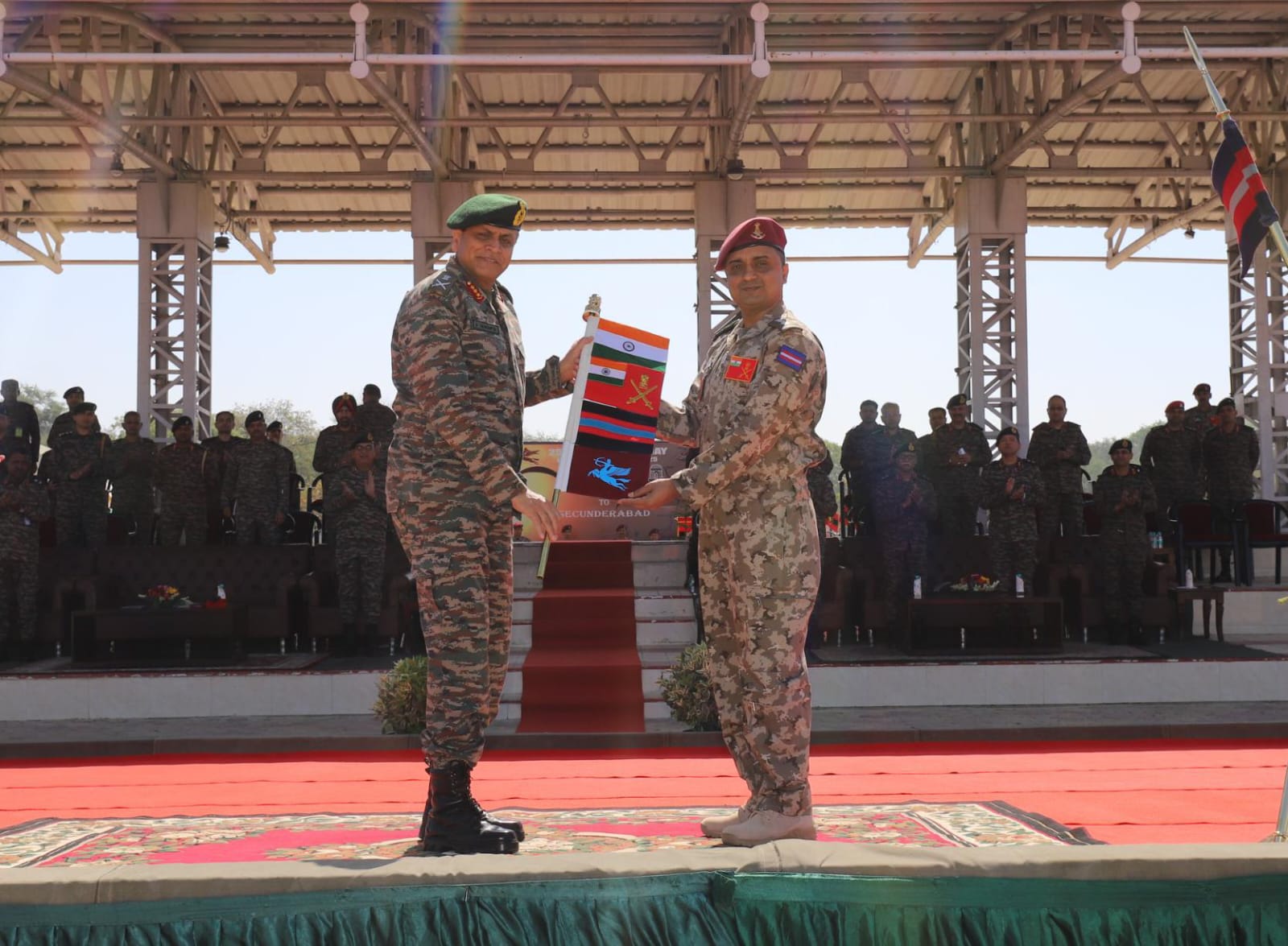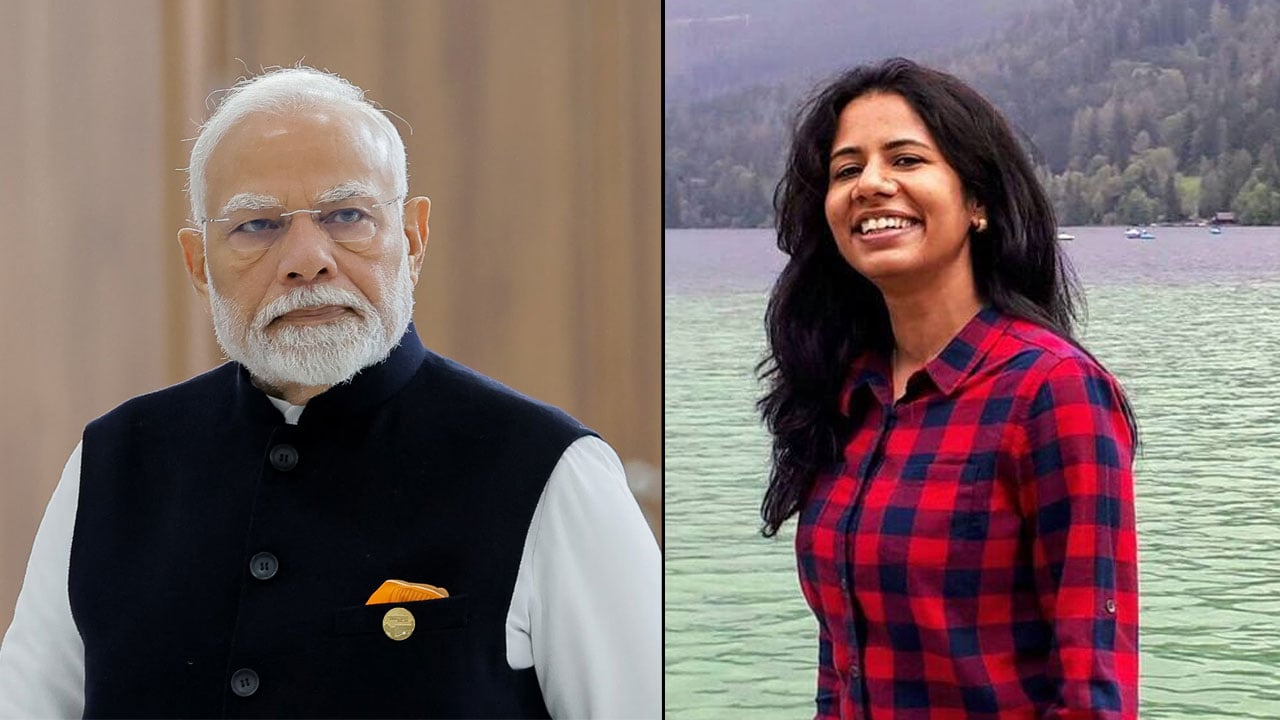The key points of Union Budget 2019–20 are very important from the examination point of view. Candidates should note that these type of topics should read very carefully. General awareness and current affair questions will be asked in all the entrance examinations. The Union Minister for Finance and Corporate Affairs Smt. Nirmala Sitharaman made her maiden Budget Speech today and presented the Union Budget 2019-20 before the Parliament. The key highlights of Union Budget 2019 are as follows:
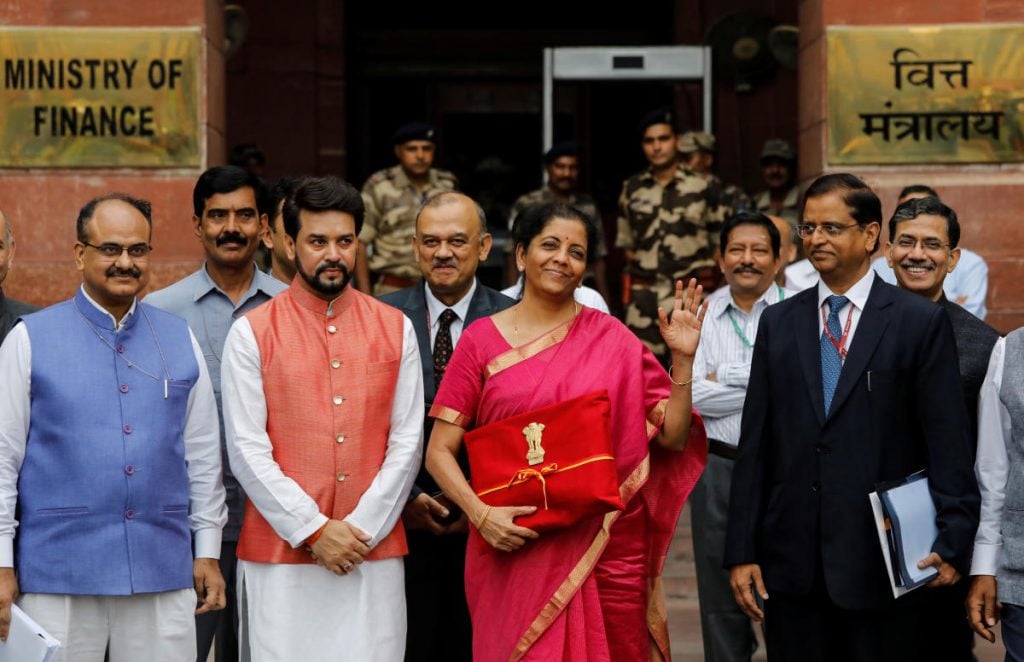
10-point Vision for the decade:
- Building Team India with Jan Bhagidari: Minimum Government Maximum Governance.
- Achieving green Mother Earth and Blue Skies through a pollution-free India.
- Making Digital India reach every sector of the economy.
- Launching Gaganyan, Chandrayan, other Space and Satellite programs.
- Building physical and social infrastructure.
- Water, water management, clean rivers.
- Blue Economy.
- Self-sufficiency and export of food-grains, pulses, oilseeds, fruits, and vegetables.
- Achieving a healthy society via Ayushman Bharat, well-nourished women & children, the safety of citizens.
- Emphasis on MSMEs, Start-ups, defence manufacturing, automobiles, electronics, fabs and batteries, and medical devices under Make in India
Towards a 5 Trillion Dollar Economy:
- “People’s hearts filled with Aasha (Hope), Vishwas (Trust), Aakansha (Aspirations)”, says FM.
- Indian economy to become a 3 trillion dollar economy in the current year.
- The government aspires to make India a 5 trillion dollar economy.
- “India Inc. is India’s job-creators and nation’s wealth-creators”, says FM.
- Need for investment in Infrastructure & Digital Economy.
- Job creation in small and medium firms.
- Initiatives to be proposed for kick-starting the virtuous cycle of investments.
- Common man’s life changed through MUDRA loans for ease of doing business.
Measures related to MSMEs:
- Pradhan Mantri Karam Yogi Maandhan Scheme :
- Pension benefits to about three crore retail traders & small shopkeepers with an annual turnover of less than Rs. 1.5 crore.
- Enrolment to be kept simple, requiring only Aadhaar, bank account, and a self-declaration.
- Rs. 350 crore allocated for FY 2019-20 for 2% interest subvention (on fresh or incremental loans) to all GST-registered MSMEs, under the Interest Subvention Scheme for MSMEs.
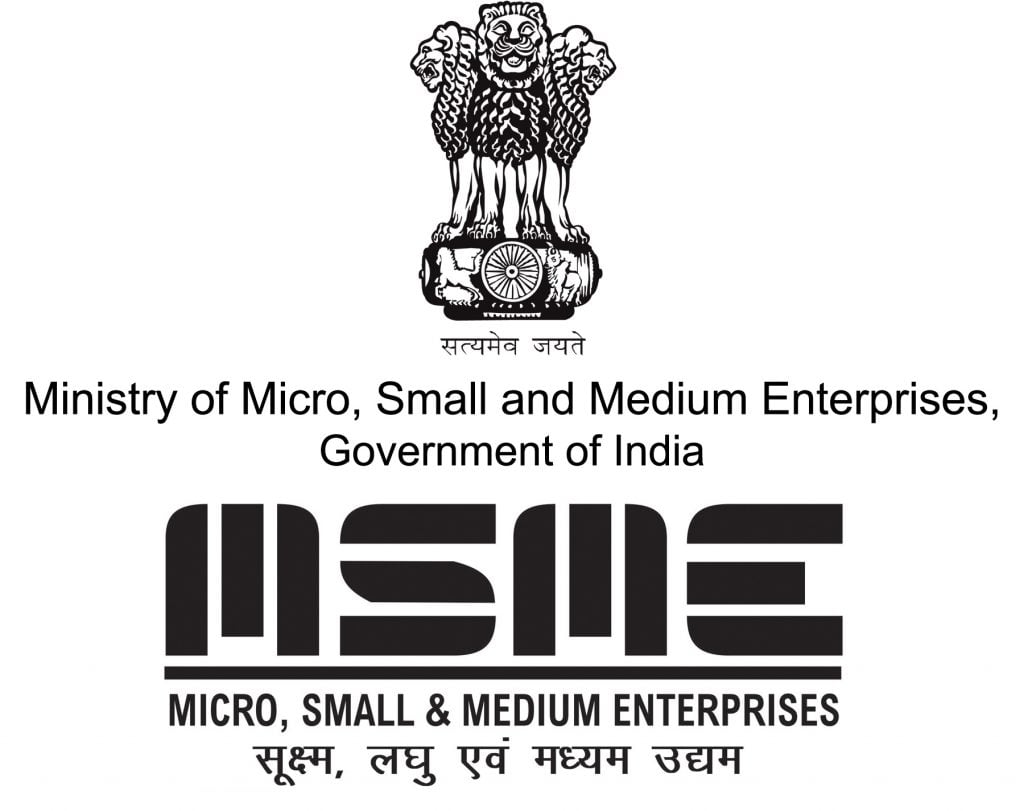
- Payment platform for MSMEs to be created to enable filing of bills and payment thereof, to eliminate delays in government payments.
- India’s first indigenously developed payment ecosystem for transport, based on National Common Mobility Card (NCMC) standards, launched in March 2019.
- Inter-operable transport card runs on RuPay card and would allow the holders to pay for bus travel, toll taxes, parking charges, retail shopping.
- Massive push is given to all forms of physical connectivity through:
- Pradhan Mantri Gram Sadak Yojana.
- Industrial Corridors, Dedicated Freight Corridors.
- Bhartamala and Sagarmala projects, Jal Marg Vikas and UDAN Schemes.
- State road networks to be developed in the second phase of Bharatmala project.
- The navigational capacity of Ganga to be enhanced via multi-modal terminals at Sahibganj and Haldia and a navigational lock at Farakka by 2019-20, under Jal Marg Vikas Project.
- Four times increase in the next four years estimated in the cargo volume on Ganga, leading to cheaper freight and passenger movement and reducing the import bill.
- Rs. 50 lakh crore investment needed in Railway Infrastructure during 2018-2030.
- Public-Private-Partnership proposed for development and completion of tracks, rolling stock manufacturing and delivery of passenger freight services.
- 657 kilometers of Metro Rail network has become operational across the country.
- Policy interventions to be made for the development of Maintenance, Repair, and Overhaul (MRO), to achieve self- reliance in the aviation segment.
- Regulatory Roadmap for making India a hub for aircraft financing and leasing activities from Indian shores, to be paid by the Government.
- An outlay of Rs. 10,000 crore for 3 years approved for phase-II of FAME Scheme.
- Upfront incentive proposed on purchase and charging infrastructure, to encourage faster adoption of Electric Vehicles.
- Only advanced-battery-operated and registered e-vehicles to be incentivized under FAME Scheme.
- National Highway Programme to be restructured to ensure a National Highway Grid, using a financeable model.
- Power at affordable rates to states ensured under ‘One Nation, One Grid’.
- Blueprints to be made available for gas grids, water grids, i-ways, and regional airports.
- High-Level Empowered Committee (HLEC) recommendations to be implemented:
- Retirement of old & inefficient plants.
- Addressing the low utilization of gas plant capacity due to paucity of Natural Gas.
- Cross-subsidy surcharges, undesirable duties on open access sales or captive generation for industrial and other bulk power consumers to be removed under Ujjwal DISCOM Assurance Yojana (UDAY).
- Package of power sector tariff and structural reforms to be announced soon.
- Reform measures to be taken up to promote rental housing.
- Model Tenancy Law to be finalized and circulated to the states.
- Joint development and concession mechanisms to be used for public infrastructure and affordable housing on land parcels held by the Central Government and CPSEs.
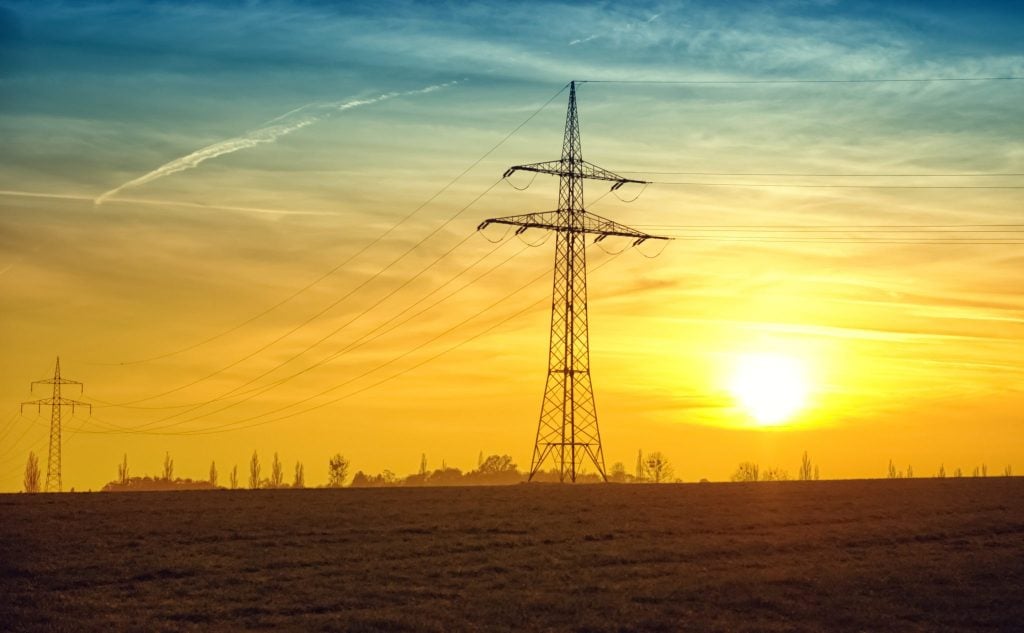
- Measures to enhance the sources of capital for infrastructure financing:
- Credit Guarantee Enhancement Corporation to be set up in 2019-2020.
- Action plan to be put in place to deepen the market for long term bonds with a focus on infrastructure.
- Proposed transfer/sale of investments by FIIs/FPIs (in debt securities issued by IDF-NBFCs) to any domestic investor within the specified lock-in period.
- Measures to deepen bond markets:
- Stock exchanges to be enabled to allow AA rated bonds as collaterals.
- User-friendliness of trading platforms for corporate bonds to be reviewed.
- Social stock exchange:
- Electronic fundraising platform under the regulatory ambit of SEBI.
- Listing social enterprises and voluntary organizations.
- To raise capital as equity, debt or as units like a mutual fund.
- SEBI to consider raising the threshold for a minimum public shareholding in the listed companies from 25% to 35%.
- Know Your Customer (KYC) norms for Foreign Portfolio Investors to be made more investor-friendly.
- Government to supplement efforts by RBI to get retail investors to invest in government treasury bills and securities, with further institutional development using stock exchanges.
- Measures to make India a more attractive FDI destination:
- FDI in sectors like aviation, media (animation, AVGC) and insurance sectors can be opened further after the multi-stakeholder examination.
- Insurance Intermediaries to get 100% FDI.
- Local sourcing norms to be eased for FDI in Single Brand Retail sector.
- Government to organize an annual Global Investors Meet in India, using National Infrastructure Investment Fund (NIIF) as an anchor to get all three sets of global players (pension, insurance and sovereign wealth funds).
- The statutory limit for FPI investment in a company is proposed to be increased from 24% to sectoral foreign investment limit. Option to be given to the concerned corporate to limit it to a lower threshold.
- FPIs to be permitted to subscribe to listed debt securities issued by ReITs and InvITs.
- NRI-Portfolio Investment Scheme Route is proposed to be merged with the Foreign Portfolio Investment Route.
- Cumulative resources garnered through new financial instruments like Infrastructure Investment Trusts (InvITs), Real Estate Investment Trusts (REITs), as well as models like Toll-Operate-Transfer (ToT), exceed Rs. 24,000 crore.
- New Space India Limited (NSIL), a PSE, incorporated as a new commercial arm of Department of Space.
- To tap the benefits of the Research & Development carried out by ISRO like commercialization of products like launch vehicles, transfer to technologies and marketing of space products.
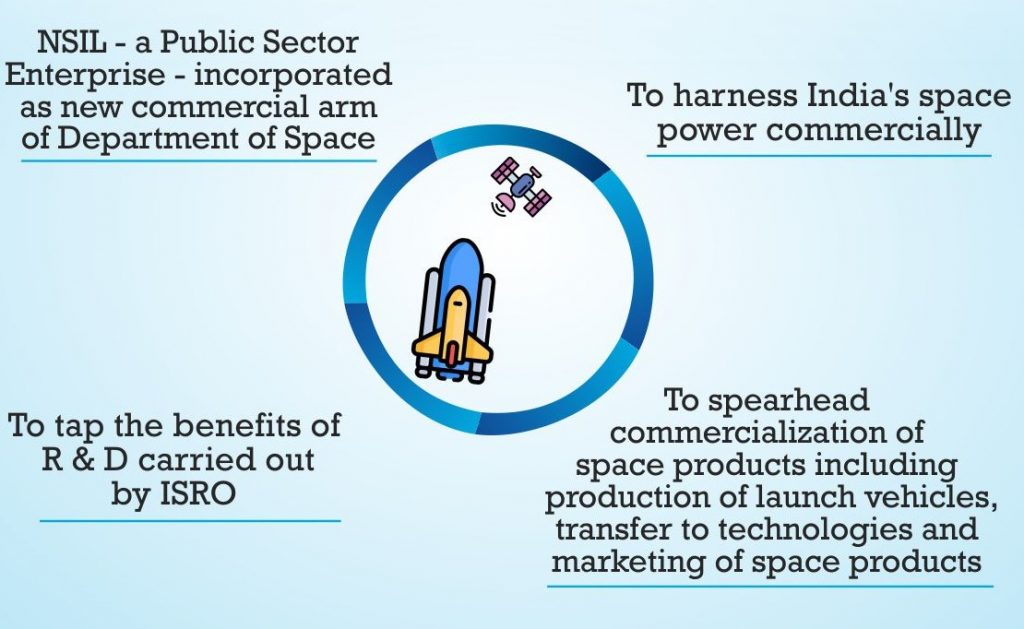
Direct Taxes :
- Tax rate reduced to 25% for companies with annual turnover up to Rs. 400 crore
- Surcharge increased on individuals having taxable income from Rs. 2 crore to Rs. 5 crore and Rs. 5 crore and above.
- India’s Ease of Doing Business ranking under the category of ‘paying taxes’ jumped from 172 in 2017 to 121 in the 2019.
- Direct tax revenue increased by over 78% in past 5 years to Rs. 11.37 lakh crore
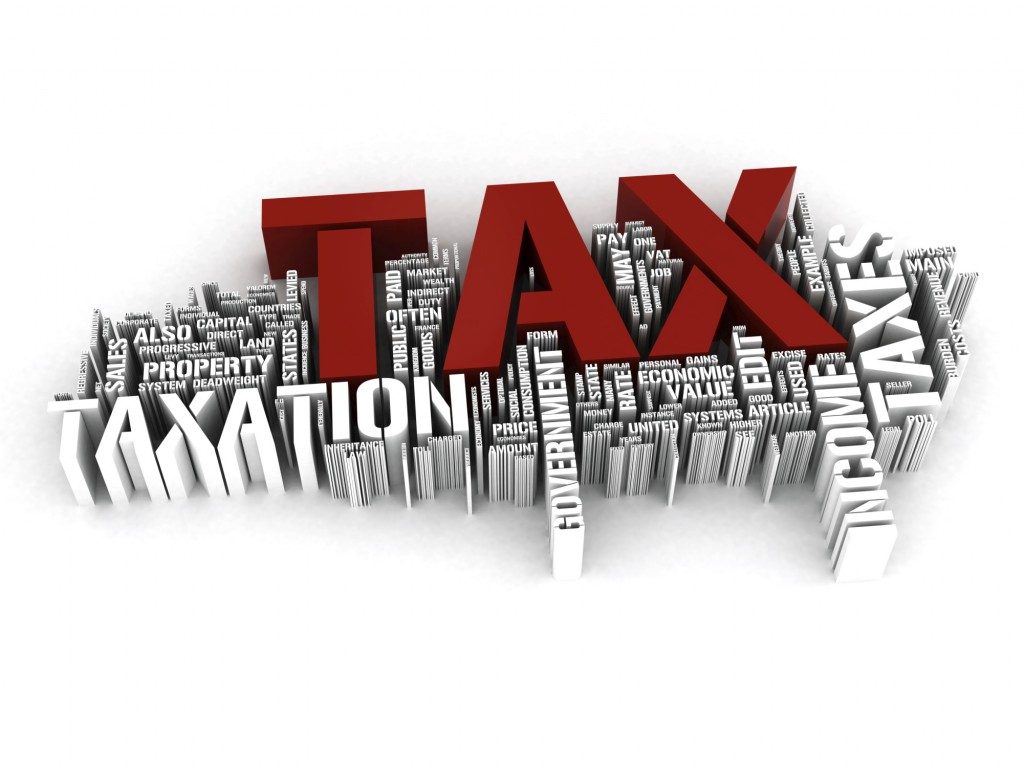
Tax Simplification and Ease of living – making compliance easier by leveraging technology:
- Interchangeability of PAN and Aadhaar
- Those who don’t have PAN can file tax returns using Aadhaar.
- Aadhaar can be used wherever PAN is required.
- Pre-filling of Income-tax Returns for faster, more accurate tax returns
- Pre-filled tax returns with details of several incomes and deductions to be made available.
- Information to be collected from Banks, Stock exchanges, mutual funds etc.
- Faceless e-assessment
- Faceless e-assessment with no human interface to be launched.
- To be carried out initially in cases requiring verification of certain specified transactions or discrepancies.
Affordable housing
- Additional deduction up to Rs. 1.5 lakhs for interest paid on loans borrowed up to 31st March 2020 for purchase of house valued up to Rs. 45 lakh.
- The overall benefit of around Rs. 7 lakh over a loan period of 15 years.
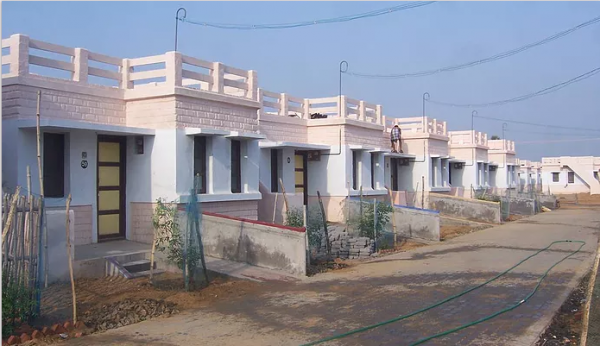
Boost to Electric Vehicles
- Additional income tax deduction of Rs. 1.5 lakh on interest paid on electric vehicle loans.
- Customs duty exempted on certain parts of electric vehicles.
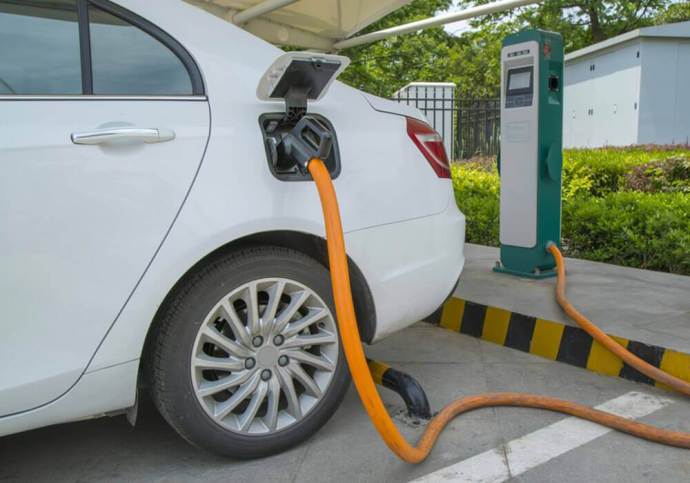
Other Direct Tax measures
- Simplification of tax laws to reduce genuine hardships of taxpayers:
- The higher tax threshold for launching prosecution for non-filing of returns
- Appropriate class of persons exempted from the anti-abuse provisions of Section 50CA and Section 56 of the Income Tax Act.
Relief for Start-ups
- Capital gains exemptions from the sale of residential house for investment in start-ups extended till FY21.
- ‘Angel tax’ issue resolved- start-ups and investors filing requisite declarations and providing information in their returns not to be subjected to any kind of scrutiny in respect of valuations of share premiums.
- Funds raised by start-ups to not require scrutiny from Income Tax Department
- E-verification mechanism for establishing the identity of the investor and source of funds.
- Special administrative arrangements for pending assessments and grievance redressal
- No inquiry in such cases by the Assessing Officer without obtaining approval of the supervisory officer.
- No scrutiny of valuation of shares issued to Category-II Alternative Investment Funds.
- Relaxation of conditions for carrying forward and set off of losses.
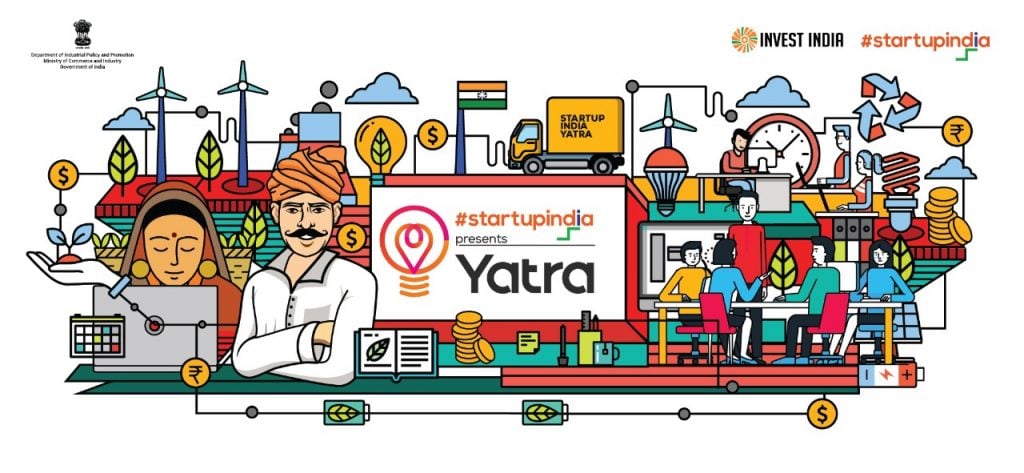
NBFCs
- Interest on certain bad or doubtful debts by deposit taking as well as systemically important non-deposit taking NBFCs to be taxed in the year in which interest is actually received.
International Financial Services Centre (IFSC)
- Direct tax incentives proposed for an IFSC:
- 100 % profit-linked deduction in any ten-year block within a fifteen-year period.
- Exemption from dividend distribution tax from current and accumulated income to companies and mutual funds.
- Exemptions on capital gain to Category-III Alternative Investment Funds (AIFs).
- Exemption to interest payment on the loan is taken from non-residents.
Securities Transaction Tax (STT)
- STT restricted only to the difference between settlement and strike price in case of exercise of options.
Indirect Taxes :
Make In India
- Basic Customs Duty increased on cashew kernels, PVC, tiles, auto parts, marble slabs, optical fibre cable, CCTV camera etc.
- Exemptions from Custom Duty on certain electronic items now manufactured in India withdrawn.
- End use based exemptions on palm stearin, fatty oils withdrawn.
- Exemptions to various kinds of papers withdrawn.
- 5% Basic Custom Duty imposed on imported books.
- Customs duty reduced on certain raw materials such as:
- Inputs for artificial kidney and disposable sterilised dialyser and fuels for nuclear power plants etc.
- Capital goods required for manufacture of specified electronic goods.
Defence
- Defence equipment not manufactured in India exempted from basic customs duty

Other Indirect Tax provisions
- Export duty rationalized on raw and semi-finished leather
- Increase in Special Additional Excise Duty and Road and Infrastructure Cess each by Rs. 1 per litre on petrol and diesel
- Customs duty on gold and other precious metals increased
- Legacy Dispute Resolution Scheme for quick closure of pending litigations in Central Excise and Service tax from the pre-GST regime
Grameen Bharat / Rural India
- Ujjwala Yojana and Saubhagya Yojana have transformed the lives of every rural family, dramatically improving the ease of their living.
- Electricity and clean cooking facility to all willing rural families by 2022.
- Pradhan Mantri Awas Yojana – Gramin (PMAY-G) aims to achieve “Housing for All” by 2022:
- Eligible beneficiaries to be provided 1.95 crore houses with amenities like toilets, electricity and LPG connections during its second phase (2019-20 to 2021-22).
- Pradhan Mantri Matsya Sampada Yojana (PMMSY)
- A robust fisheries management framework through PMMSY to be established by the Department of Fisheries.
- To address critical gaps in the value chain including infrastructure, modernization, traceability, production, productivity, post-harvest management, and quality control.
- Pradhan Mantri Gram Sadak Yojana (PMGSY)
- The target of connecting the eligible and feasible habitations advanced from 2022 to 2019 with 97% of such habitations already being provided with all-weather connectivity.
- 30,000 kilometers of PMGSY roads have been built using Green Technology, Waste Plastic, and Cold Mix Technology, thereby reducing carbon footprint.
- 1,25,000 kilometers of road length to be upgraded over the next five years under PMGSY III with an estimated cost of Rs. 80,250 crore.
- Scheme of Fund for Upgradation and Regeneration of Traditional Industries’ (SFURTI)
- Common Facility Centres (CFCs) to be set up to facilitate cluster-based development for making traditional industries more productive, profitable and capable of generating sustained employment opportunities.
- 100 new clusters to be set up during 2019-20 with special focus on Bamboo, Honey, and Khadi, enabling 50,000 artisans to join the economic value chain.
- Scheme for Promotion of Innovation, Rural Industry, and Entrepreneurship’ (ASPIRE) consolidated.
- 80 Livelihood Business Incubators (TBIs) and 20 Technology Business Incubators (TBIs) to be set up in 2019-20.
- 75,000 entrepreneurs to be skilled in agro-rural industry sectors.
- Private entrepreneurship to be supported in driving value-addition to farmers’ produce from the field and for those from allied activities.
- Dairying through cooperatives to be encouraged by creating infrastructure for cattle feed manufacturing, milk procurement, processing & marketing.
- India’s water security
- New Jal Shakti Mantralaya to look at the management of our water resources and water supply in an integrated and holistic manner
- Jal Jeevan Mission to achieve Har Ghar Jal (piped water supply) to all rural households by 2024
- To focus on integrated demand and supply-side management of water at the local level.
- Convergence with other Central and State Government Schemes to achieve its objectives.
- 1592 critical and overexploited Blocks spread across 256 District being identified for the Jal Shakti Abhiyan.
- Compensatory Afforestation Fund Management and Planning Authority (CAMPA) fund can be used for this purpose.
- Pradhan Mantri Gramin Digital Saksharta Abhiyan
- Over two crore rural Indians made digitally literate.
- Internet connectivity in local bodies in every Panchayat under Bharat-Net to bridge the rural-urban divide.
- Universal Obligation Fund under a PPP arrangement to be utilized for speeding up Bharat-Net.
- 10,000 new Farmer Producer Organizations to be formed, to ensure economies of scale for farmers.
- Government to work with State Governments to allow farmers to benefit from e-NAM.
- Zero Budget Farming in which few states’ farmers are already being trained to be replicated in other states.

Swachh Bharat Abhiyan
- 9.6 crore toilets constructed since Oct 2, 2014.
- More than 5.6 lakh villages have become Open Defecation Free (ODF).
- Swachh Bharat Mission to be expanded to undertake sustainable solid waste management in every village.
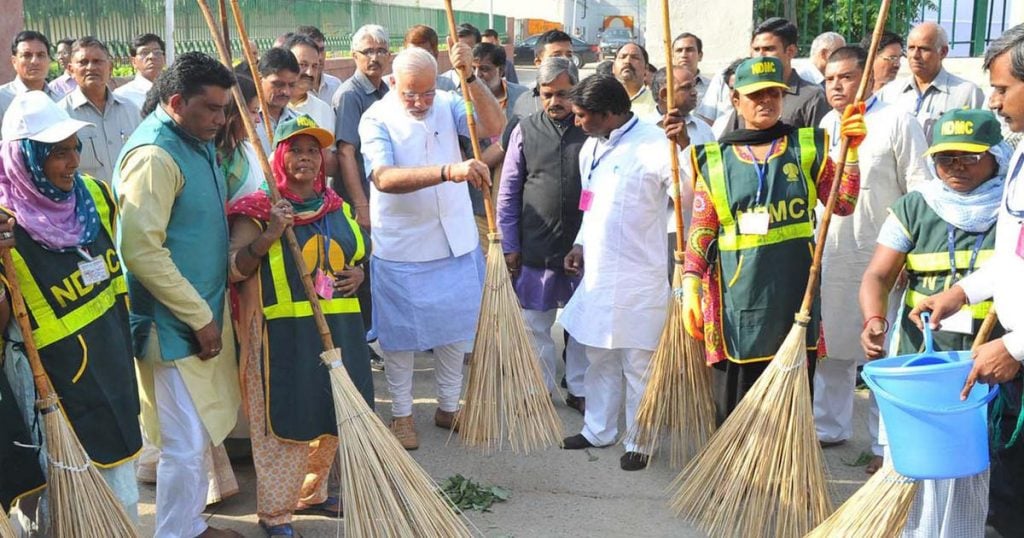
Shahree Bharat/Urban India
- Pradhan Mantri Awas Yojana – Urban (PMAY-Urban)-
- Over 81 lakh houses with an investment of about Rs. 4.83 lakh crore sanctioned of which construction started in about 47 lakh houses.
- Over 26 lakh houses completed of which nearly 24 lakh houses delivered to the beneficiaries.
- Over 13 lakh houses so far constructed using new technologies.
- More than 95% of cities also declared Open Defecation Free (ODF).
- Almost 1 crore citizens have downloaded Swachhata App.
- Target of achieving Gandhiji’s resolve of Swachh Bharat to make India ODF by 2nd October 2019.
- To mark this occasion, the Rashtriya Swachhta Kendra to be inaugurated at Gandhi Darshan, Rajghat on 2nd October, 2019.
- Gandhipedia being developed by National Council for Science Museums to sensitize youth and society about positive Gandhian values.
- Railways to be encouraged to invest more in suburban railways through SPV structures like Rapid Regional Transport System (RRTS) proposed on the Delhi-Meerut route.
- Proposal to enhance the metro-railway initiatives by:
- Encouraging more PPP initiatives.
- Ensuring completion of sanctioned works.
- Supporting transit oriented development (TOD) to ensure commercial activity around transit hubs.
Youth
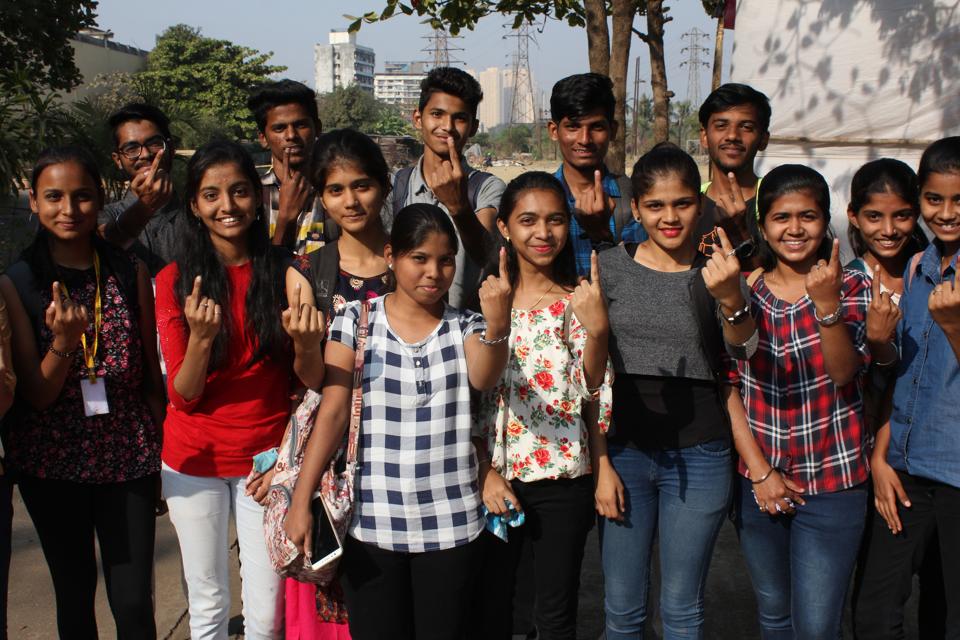
- New National Education Policy to be brought which proposes
- Major changes in both school and higher education
- Better Governance systems
- Greater focus on research and innovation.
- National Research Foundation (NRF) proposed
- To fund, coordinate and promote research in the country.
- To assimilate independent research grants given by various Ministries.
- To strengthen overall research eco-system in the country
- This would be adequately supplemented with additional funds.
- Rs. 400 crore provided for “World Class Institutions”, for FY 2019-20, more than three times the revised estimates for the previous year.
- ‘Study in India’ proposed to bring foreign students to study in Indian higher educational institutions.
- Regulatory systems of higher education to be reformed comprehensively:
- To promote greater autonomy.
- To focus on better academic outcomes.
- Draft legislation to set up Higher Education Commission of India (HECI), to be presented.
- Khelo India Scheme to be expanded with all necessary financial support.
- National Sports Education Board for development of sportspersons to be set up under Khelo India, to popularize sports at all levels
- To prepare youth for overseas jobs, focus to be increased on globally valued skill-sets including language training, AI, IoT, Big Data, 3D Printing, Virtual Reality and Robotics.
- Set of four labour codes proposed, to streamline multiple labour laws to standardize and streamline registration and filing of returns.
- A television program proposed exclusively for and by start-ups, within the DD bouquet of channels.
- Stand-Up India Scheme to be continued for the period of 2020-25. The Banks to provide financial assistance for demand based businesses.
Ease of Living
- About 30 lakh workers joined the Pradhan Mantri Shram Yogi Maandhan Scheme that provides Rs. 3,000 per month as pension on attaining the age of 60 to workers in unorganized and informal sectors.
- Approximately 35 crores LED bulbs distributed under UJALA Yojana leading to cost saving of Rs. 18,341 crore annually.
- Solar stoves and battery chargers to be promoted using the approach of LED bulbs mission.
- A massive program of railway station modernization to be launched.
Naari Tu Narayani/Women
- Approach shift from women-centric-policy making to women-led initiatives and movements.
- A Committee proposed with Government and private stakeholders for moving forward on Gender budgeting.
- SHG:
- Women SHG interest subvention program proposed to be expanded to all districts.
- Overdraft of Rs. 5,000 to be allowed for every verified woman SHG member having a Jan Dhan Bank Account.
- One woman per SHG to be eligible for a loan up to Rs. 1 lakh under MUDRA Scheme.
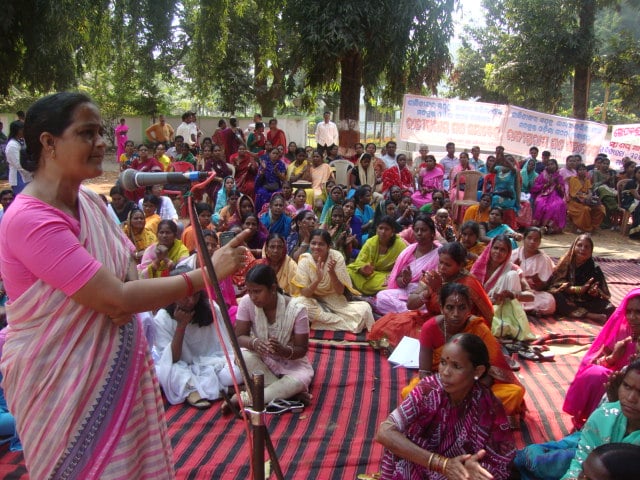
India’s Soft Power
- Proposal to consider issuing Aadhaar Card for NRIs with Indian Passports on their arrival without waiting for 180 days.
- Mission to integrate traditional artisans with global markets proposed, with necessary patents and geographical indicators.
- 18 new Indian diplomatic Missions in Africa approved in March 2018, out of which 5 already opened. Another 4 new Embassies intended in 2019-20.
- Revamp of Indian Development Assistance Scheme (IDEAS) proposed.
- 17 iconic Tourism Sites being developed into model world-class tourist destinations.
- Present digital repository aimed at preserving rich tribal cultural heritage, to be strengthened.
Banking and Financial Sector
- NPAs of commercial banks reduced by over Rs. 1 lakh crore over the last year.
- Record recovery of over Rs. 4 lakh crore effected over the last four years.
- Provision coverage ratio at its highest in seven years.
- Domestic credit growth increased to 13.8%.
- Measures related to PSBs:
- Rs. 70,000 crore proposed to be provided to PSBs to boost credit.
- PSBs to leverage technology, offering online personal loans and doorstep banking, and enabling customers of one PSBs to access services across all PSBs.
- Steps to be initiated to empower accountholders to have control over the deposit of cash by others in their accounts.
- Reforms to be undertaken to strengthen governance in PSBs.
- Measures related to NBFCs:
- Proposals for strengthening the regulatory authority of RBI over NBFCs to be placed in the Finance Bill.
- The requirement of creating a Debenture Redemption Reserve will be done away with to allow NBFCs to raise funds in public issues.
- Steps to allow all NBFCs to directly participate in the trends platform.
- Return of regulatory authority from NHB to RBI proposed, over the housing finance sector.
- Rs. 100 lakh crore investment in infrastructure intended over the next five years. Committee proposed to recommend the structure and required a flow of funds through development finance institutions.
- Steps to be taken to separate the NPS Trust from PFRDA.
- Reduction in Net Owned Fund requirement from Rs. 5,000 crore to Rs. 1,000 crore proposed:
- To facilitate the on-shoring of international insurance transactions.
- To enable the opening of branches by foreign reinsurers in the International Financial Services Centre.
- Measures related to CPSEs:
- The target of Rs. 1,05,000 crore of disinvestment receipts set for the FY 2019-20.
- Government to reinitiate the process of strategic disinvestment of Air India, and to offer more CPSEs for strategic participation by the private sector.
- Government to undertake the strategic sale of PSUs and continue to consolidate PSUs in the non-financial space.
- Government to consider going to an appropriate level below 51% in PSUs where the government control is still to be retained, on case to case basis.
- The present policy of retaining 51% Government stake to be modified to retaining 51% stake inclusive of the stake of Government controlled institutions.
- Retail participation in CPSEs to be encouraged.
- To provide additional investment space:
- Government to realign its holding in CPSEs
- Banks to permit greater availability of its shares and to improve depth of its market.
- Government to offer an investment option in ETFs on the lines of Equity Linked Savings Scheme (ELSS).
- Government to meet public shareholding norms of 25% for all listed PSUs and raise the foreign shareholding limits to maximum permissible sector limits for all PSU companies which are part of Emerging Market Index.
- Government to raise a part of its gross borrowing program in external markets in external currencies. This will also have a beneficial impact on the demand situation for government securities in the domestic market.
- New series of coins of One Rupee, Two Rupees, Five Rupees, Ten Rupees, and Twenty Rupees, easily identifiable to the visually impaired to be made available for public use shortly.
Digital Payments
- TDS of 2% on cash withdrawal exceeding Rs. 1 crore in a year from a bank account
- Business establishments with annual turnover more than Rs. 50 crore shall offer low cost digital modes of payment to their customers and no charges or Merchant Discount Rate shall be imposed on customers as well as merchants.

Mega Investment in Sunrise and Advanced Technology Areas
- Scheme to invite global companies to set up mega-manufacturing plants in areas such as Semi-conductor Fabrication (FAB), Solar Photo Voltaic cells, Lithium storage batteries, Computer Servers, Laptops, etc
- Investment linked income tax exemptions to be provided along with indirect tax benefits.
Achievements during 2014-19
- 1 trillion dollars added to the Indian economy over the last 5 years (compared to over 55 years taken to reach the first trillion dollars).
- India is now the 6th largest economy in the world, compared to 11th largest five years ago.
- Indian economy is globally the 3rd largest in Purchasing Power Parity (PPP) terms.
- Strident commitment to fiscal discipline and a rejuvenated Centre-State dynamic provided during 2014-19.
- Structural reforms in indirect taxation, bankruptcy, and real estate carried out.
- The average amount spent on food security per year almost doubled during 2014-19 compared to 2009-14.
- Patents issued more than trebled in 2017-18 as against the number in 2014.
- Ball set rolling for a New India, planned and assisted by the NITI Aayog.
Roadmap for future
- Simplification of procedures.
- Incentivizing performance.
- Red-tape reduction.
- Making the best use of technology.
- Accelerating mega programmes and services initiated and delivered so far

